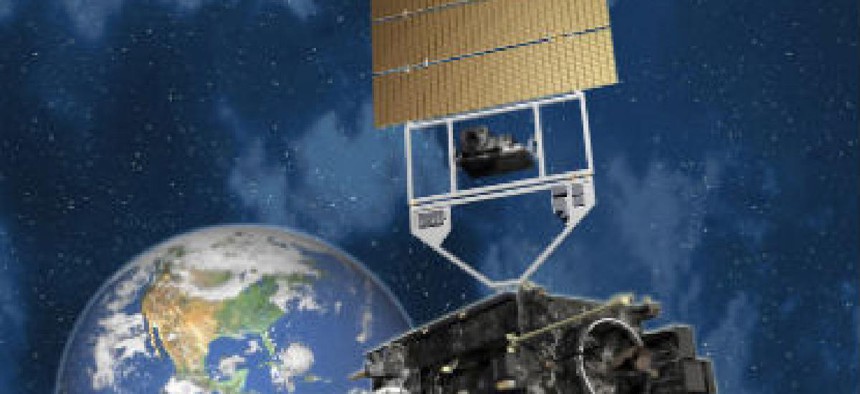NOAA resurrects backup weather satellite after GOES-13 failure

Faltering satellite provides imaging vital to short-term weather forecasts for the eastern United States and Atlantic Ocean.

One of two operational geostationary weather satellites failed May 22, forcing the National Oceanic and Atmospheric Administration to configure a backup satellite for operation just in time for what is expected to be an active six-month hurricane season beginning June 1.
On May 29, NOAA engineers reactivated the troubled Geostationary Operational Environmental Satellite (GOES)-13 (also called GOES East) in hopes of pinpointing what caused its instruments to shut down a week prior, though officials have little information yet and no estimate on how long it might take to return to operations.
GOES-13’s duties – hovering 22,300 miles above the equator and providing imaging vital to short-term weather forecasts for the eastern United States and Atlantic Ocean – now fall to spare satellite GOES-14, which began acquiring images May 23 and is operational. In a status report, NOAA officials said they were prepared to move the satellite from its western orbital storage position eastward to better track severe weather on the East Coast.
GOES-15 (also called GOES West) carries out the same imaging for the western United States, and remains operational after NOAA officials briefly expanded its coverage area while the backup satellite was activated.
It is the second time in less than a year GOES-13 has experienced a problem, with GOES-14 picking up the slack. Yet NOAA is running thin on backup satellites if any other trouble arises.
"As we've already seen this year, severe weather is a constant, potentially deadly, threat in the United States, which means NOAA’s satellites – including the back-ups – must be ready for action, so the flow of data and imagery can continue without interruption," said Mary Kicza, assistant administrator for NOAA’s Satellite and Information Service.
It is difficult to overstate the importance the geostationary weather satellites play, especially regarding short-term weather forecasts.
The two satellites – NOAA always operates one in the East and one in the West – take images that frequently end up in local television weather forecasts all over the country. Satellite imaging is particularly important in forecasting severe weather – the kind that leads to blizzards, tornadoes and hurricanes.
Last year, GOES-13 proved highly useful to meteorologists during the Hurricane Sandy saga, sending 1,200 images to NOAA forecasters from Oct. 20-31 as Hurricane Sandy gained steam and slammed into the East Coast. Data from those satellites is also fed into computer models that help predict weather.
Yet if problems plaguing GOES-13 are not fixable, NOAA’s current fleet of geostationary satellites begins to get awfully thin.
NOAA has a $10.9 billion program in place to replace its fleet of geostationary satellites called GOES-R, yet that effort has come under fire from the agency’s inspector general and others. NOAA plans to launch the first of four GOES-R satellites in 2015.
NOAA also operates a fleet of polar-orbiting satellites much closer to Earth that aid in long-term weather forecasting and producing storm warnings, though the agency faces a gap in that satellite coverage after delays in developing and deploying replacements.
NEXT STORY: Millennials Are Rewriting the Definition of Work






